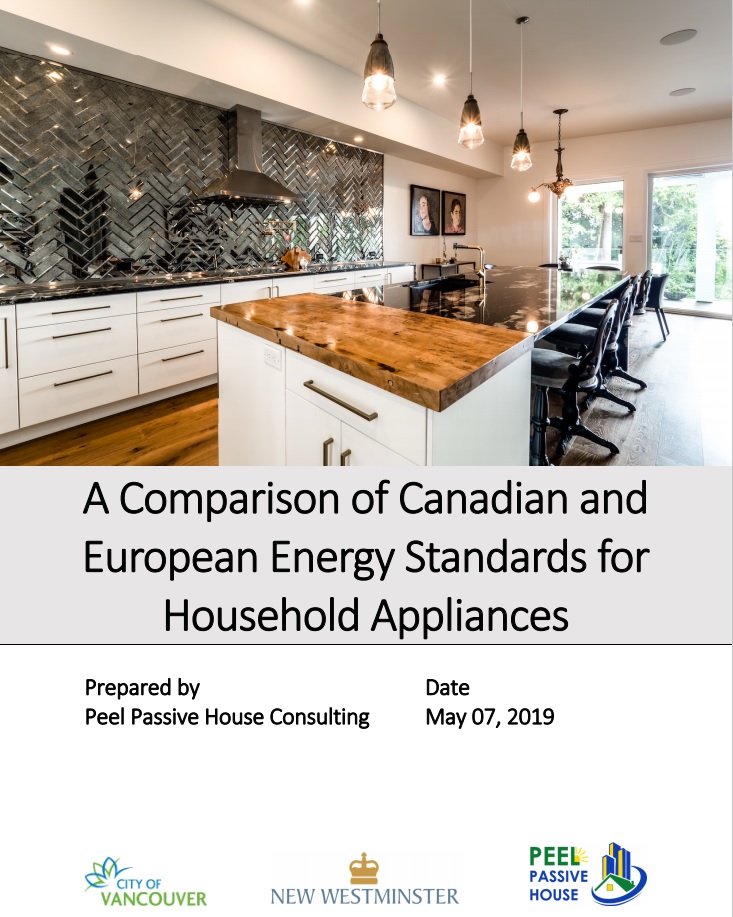Appliance Modeling Guide
Prepared by Peel Passive House. Product efficiency requirements varying greatly across product categories, appliance types, and product standards. The European requirements are generally more stringent than their North American counterparts, but this is not always the case. The Best in Class appliances available in the German market are generally more energy-efficient than the top-performing ENERGY STAR appliances. This appliance energy modeling guide is very useful. Download the guide for free.

From the Executive Summary
“The Canadian, European and, ENERGY STAR ® standards for household appliances have different metrics
depending on the type of appliance. To compare the Canadian, European, and ENERGY STAR standards,
these metrics are converted and compared to the PHPP metrics for the individual appliances found in
the electricity worksheet of PHPP.
This study also investigates the energy modeling and usage assumptions to understand how product
efficiency and occupancy usage influence the annual energy demand of appliances.
Product efficiency requirements varying greatly across product categories, appliance types, and product
standards. The European requirements are generally more stringent than their Canadian counterparts,
but this is not always the case. The Best in Class appliances available in the German market are
generally more energy-efficient than the top-performing ENERGY STAR appliances, however, there are
some exceptions.
The assumed cycles per year for dishwashers, clothes washers, and clothes dryers vary greatly over the
various energy standards investigated in this study. Due to the lack of external data, it is difficult to say if
the difference in cycles per year is based on cultural practices or just varying assumptions. The usage
assumptions for PHPP are lower than HOT2000, especially for the clothes washers. PHPP cycles per year are
more aligned with those used by the European Energy Standard except for dishwashers which are
drastically lower. These differences in usage assumptions between Canadian and European standards
have a large impact on the calculated annual energy demand. This is most notable for clothes dryers,
for which there is substantial variability in cycles per year assumed by the various energy standards. The
annual energy demand of dishwashers and clothes washers on the other hand are less affected by the
usage assumptions.
An excel tool PHPP Appliance Input Calculator has also been developed to help PHPP Users extract data
from EnerGuide or ENERGY STAR appliance labels and calculate an input that can be used in the
Electricity worksheet of PHPP. As general guidance, appliance energy use should be changed in
residential buildings only if planning or concept for efficient use of electricity exists, otherwise, standard
values already entered in PHPP should be used. When the products only meet the Canadian minimum
requirements, PHPP users could generate a variant including the actual normal demand of the products
as a stress test to see the impact on summer internal heat gains (IHG) and PER/PE demand.”
We hope you find the appliance energy modeling guide was produced by Peel Passive House Consulting.




